Fix: Allow Chrome to Access the Network in Your Firewall or Antivirus Settings
The Windows Defender Firewall oversees the network requests that your computer sends and receives. If Chrome’s network requests are being blocked, you may see the error message “Allow Chrome to access the network in your firewall or antivirus settings.”
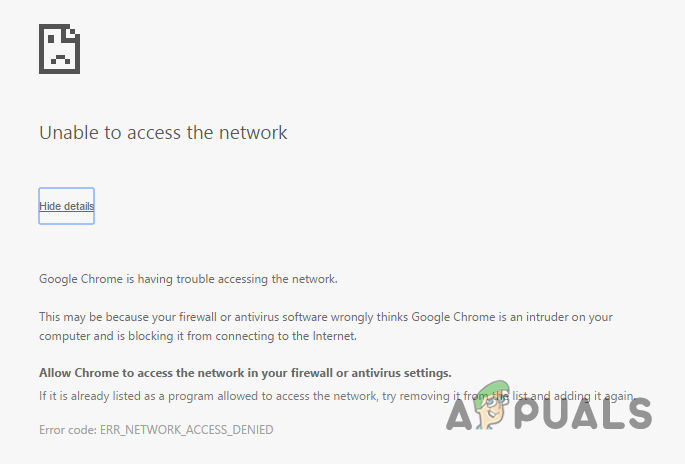
Below, we’ll guide you through how to whitelist Google Chrome in the Windows Defender Firewall on your PC and offer tips on configuring your antivirus program to accommodate the web browser.
1. Whitelist Google Chrome in Windows Defender Firewall
To whitelist Google Chrome in the Windows Defender Firewall, follow these steps, which will ensure the browser can communicate over the network without interference—particularly useful in resolving connectivity issues.
- Begin by opening the Settings app using the Win + I keys on your keyboard.
- Next, go to the Privacy and Security > Windows Security section.
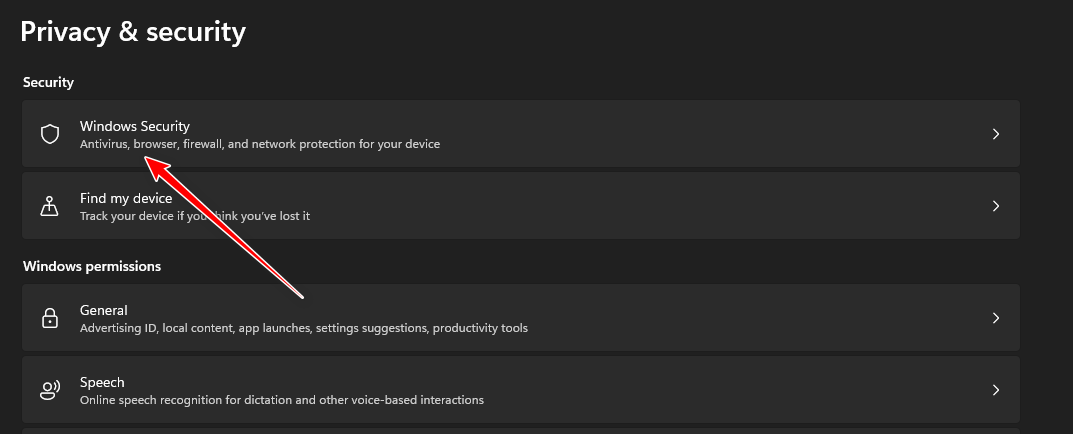
Navigating to Windows Security - Select the Firewall and network protection option from the Windows Security menu.

Navigating to Firewall and Network Settings - This action will open a new Windows Security window.
- Click on Allow an app through the firewall.
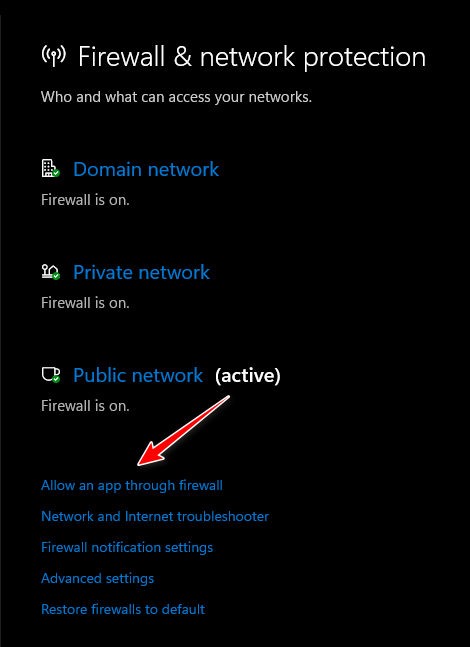
Navigating to the Allowed Apps Window - Then, select the Change settings button to modify the list of allowed apps.

Changing Firewall Whitelist Settings - Click on Allow another app….
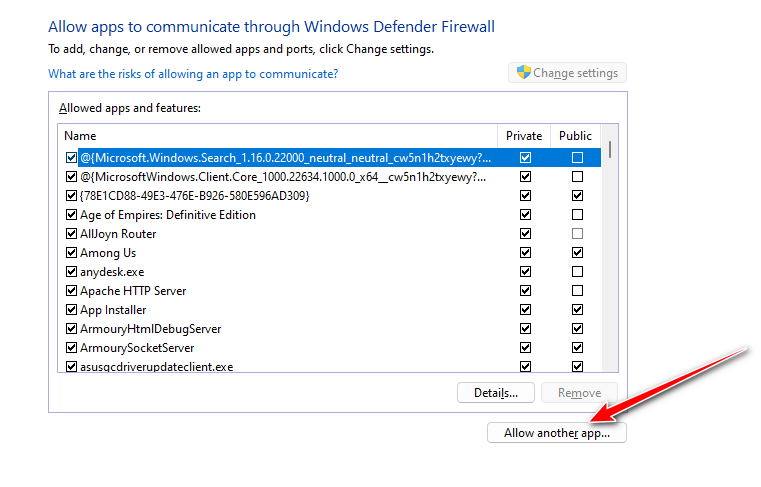
Adding another app to the Windows Firewall Whitelist - Navigate to the browser and select the chrome.exe file, typically located at:
Note: The standard path for a 64-bit Windows system is given below. However, if Google Chrome was installed in a custom directory or if you are using a 32-bit system, the path might be found at ‘C:\Program Files (x86)\Google\Chrome\Application’.C:\Program Files\Google\Chrome\Application

Adding Google Chrome - After selecting Chrome, click on the Network types… button.
- Check both the Public and Private options, and then click OK.
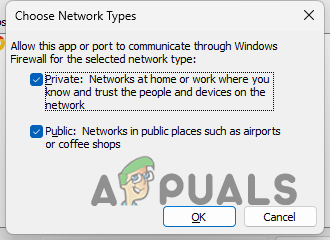
Selecting Allowed Network Types - Click the Add button to finalize the process.
- To close the window, click OK.
By completing these steps, you have successfully whitelisted Google Chrome in the Windows Defender Firewall.
2. Whitelist Google Chrome in Antivirus Programs
An antivirus program installed on your computer might block Google Chrome from sending out network requests due to enhanced internet security features.
The method to whitelist Google Chrome may vary between different antivirus programs. Considering the variety of antivirus software available, there isn’t a universal procedure applicable to all.
We recommend referring to your antivirus program’s official documentation for precise instructions. Typically, you would begin in the Settings section of the program.
Avast: Navigate to Menu > Settings > Exceptions, then add the Chrome application folder to the list.
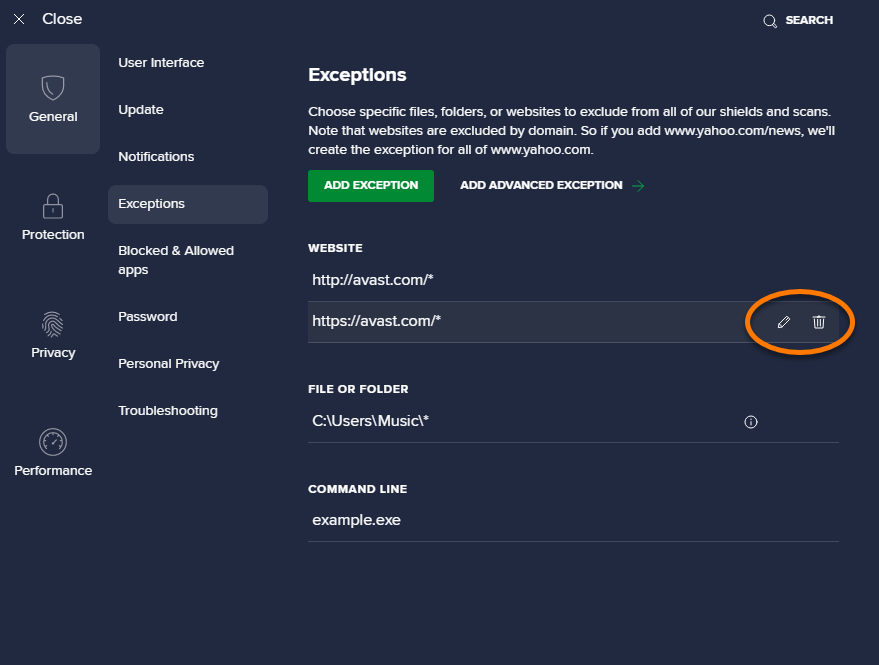
Windows Defender Antivirus: Open Virus & Threat Protection Settings and, under Exclusions, include Chrome as a folder exception.
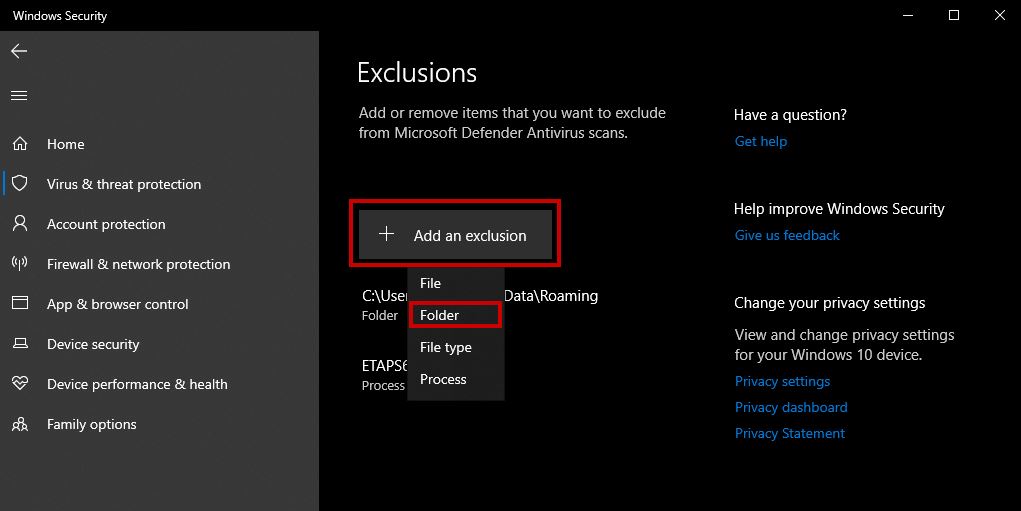
Malwarebytes: Go to Settings, find Allow List, and add the Chrome folder as a global exclusion.
You should be able to get rid of the “Allow Chrome to access the network in your firewall or antivirus settings” error message with the above methods. If the error message still occurs, reach out to the official support team for Google Chrome.